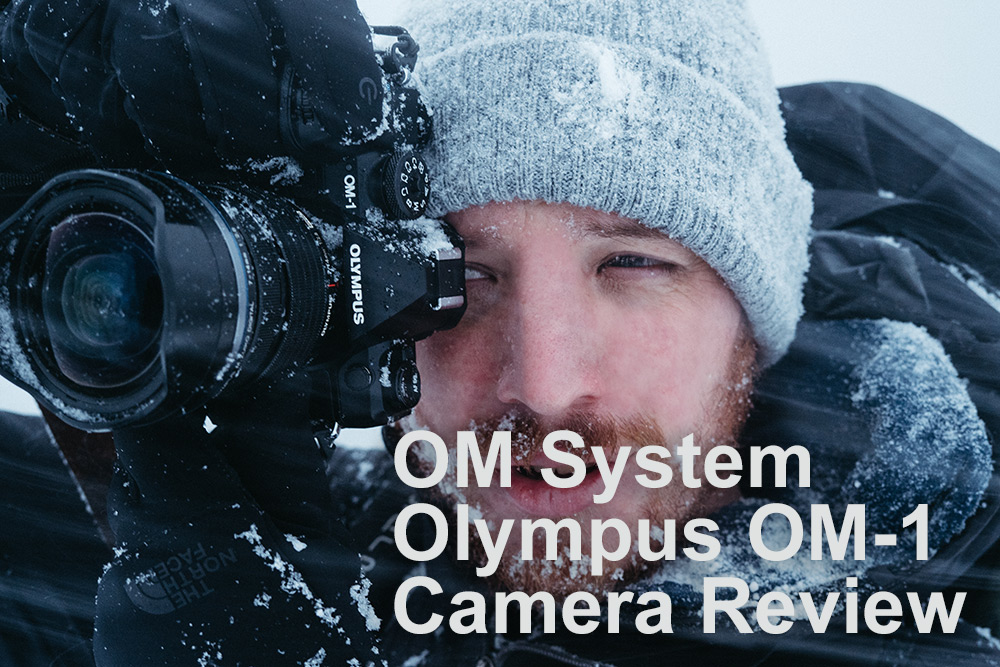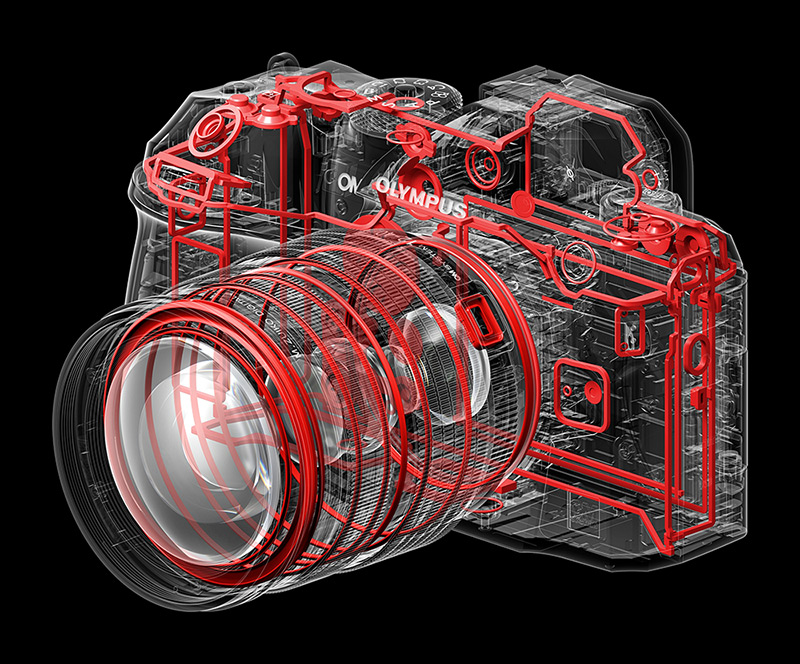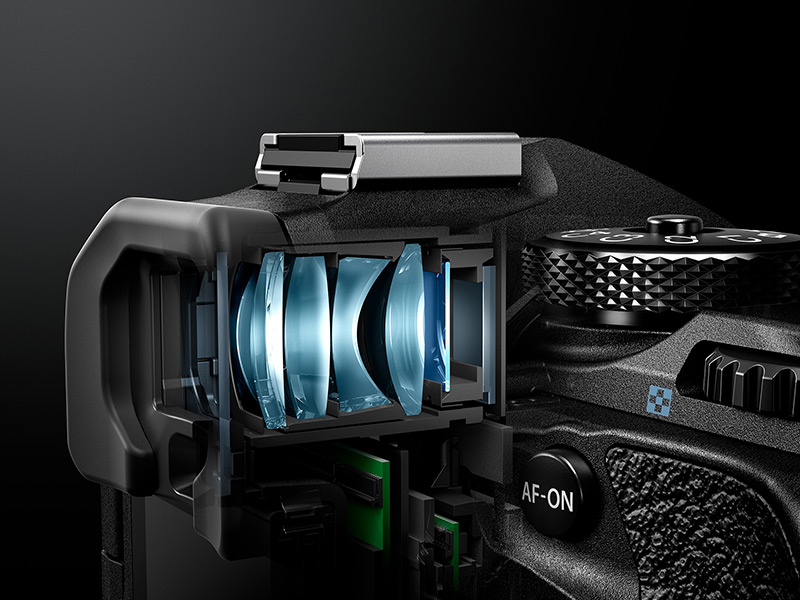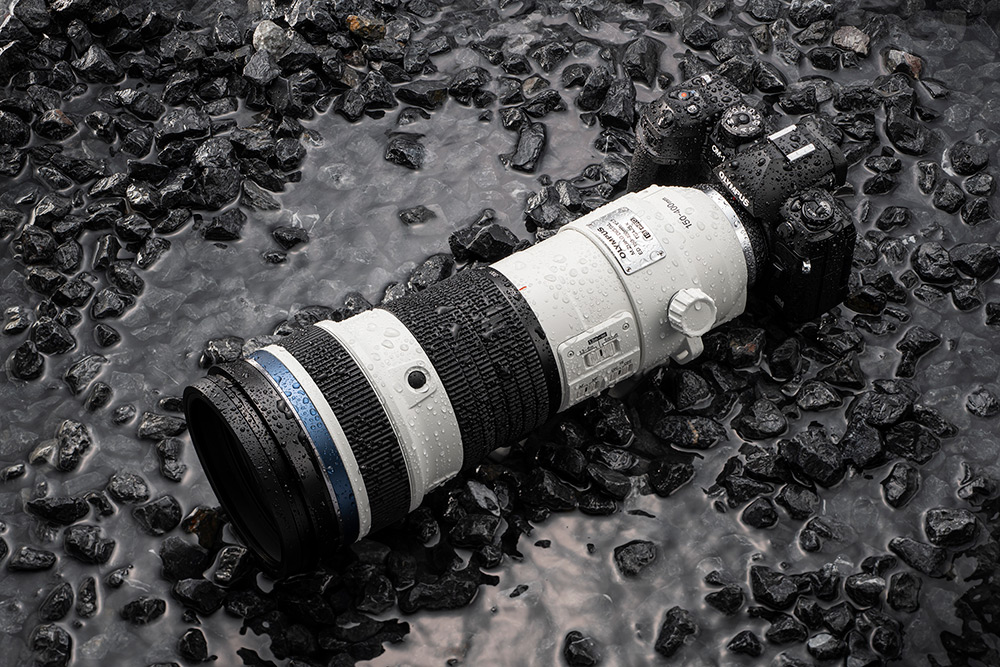- Call us: 01444 237070
- Contact Us
- Stores
- Sign In / Register
-
- Back
- Used Cameras
- Used Accessories
- Used Lenses
- Used Video
- Used Film Equipment
- Used Stock Alert
- Used Blank Test
- Sell or Part Exchange
- Used Clearance
- Recently Added Used Equipment
- Park Picks
- All Used Black Friday Deals
- Faulty
- Trade-In
- Blog
- New in
- Call us
- Contact us
- Stores
- Sign in
- Categories
- Tips & Inspiration
- Reviews
- News
- Events
- Features
- Buying Guides
- Competitions
om system olympus om1 camera review
Micro Four Thirds users have been waiting in anticipation of a new flagship OM camera. Well it’s finally here and we have a spoiler alert: The OM System OM-1 is probably far better than you could have ever hoped. Read on and watch our video review to find out precisely why.

OM-1 Camera Background
2022 follows a tumultuous couple of years across the globe, which includes Olympus rebranding to OM System. That hasn’t stopped them from releasing their very first first micro four thirds camera, one of the most comprehensive updates resulting in an entirely new flagship model – the OM System Olympus OM-1.
This micro four thirds interchangeable lens body arrives with cutting edge technology suited to professional-level photography and videography, making it unquestionably a hybrid camera, and one which punches well above its weight too.
Speaking of weight, the OM-1 is not quite featherweight at 511g (body only), or 599g when you add the brand new BLX-1 battery and an SD card. But this is still 100-200g lighter than full frame equivalent hybrid bodies and the MFT platform uses far lighter equivalent lenses, which is where the real weight savings are noticeable. It’s this compact and lightweight combination with high quality results, which has made the MFT platform such as popular choice.

Sample photo OM-1 with OM System M.Zuiko Digital ED 40-150mm f/4 PRO Lens. Camera settings 1/1000 sec. f/4.5. ISO 800
What’s new in the OM-1 Camera?
Essentially the OM-1 is based on the Olympus OM-D E-M1 MK III body, so what’s new?
Let’s start with a sensor and processor, which are the two core components in any camera. OM System has addressed both in the form of an entirely new Quad Pixel Bayer pattern stacked CMOS Sensor with approx. 20 megapixels and a new TruePic X image processor, with 3x faster processing speeds.
This combination is responsible for everything relating to start-up times, burst frame rates, sensor readout speeds and AF, as well as the quality of resulting images and videos. With two new core components users not only get substantial improvements across the board, but more refined image quality and huge AF performance upgrades. OM System’s calculations show 2-stops of noise improvement and 1-stop wider dynamic range from the new sensor. This is a substantial leap forward and suggests this sensor will no doubt find its way into professional video cameras from Blackmagic, Panasonic and other brands.
The body itself now achieves IP53 dust and splashproof standards, when combined with new and forthcoming IP53-rated lenses. This is a world-first level of weather sealing and one that cements the system as an outdoor enthusiasts go-to reliable platform, which operates down to -10ºC.

Other new technology includes a brand new OLED EVF with 5,76M dots, a blackout-free viewfinder which is crisp and clear. You can add various grids including trichotomy /golden grid / scale / diagonal / movie grid and there are three different viewing styles to choose from.

The fully articulating 1.62M dots, 3-inch LCD is also upgraded, but still offers vloggers and selfie-takers a touchscreen that puts them firmly in the picture.
From the two available SD card slots, both are high speed UHS-II compliant, because the OM-1 is capable of blisteringly quick burst rates with blackout-free shooting at up to 120fps (RAW). The camera will also record 4K/60p internally in 4:2:2 at speeds of up to 240p in Full HD, which requires fast data transfer, in support of the brand new fast readout sensor.
As mentioned the OM-1 now employs a new BLX-1 Lithium-Ion Rechargeable Battery pack, which promises 25% better performance (around 520 shots), and you can double your shooting capacity to around 1000 shots with the new custom HLD-10 Power Battery Grip.
Whist on the subject of what’s new, OM System has taken the opportunity to overhaul menu navigation, with the OM-1 arriving sporting a new, easy to navigate and renamed menu system. This will let you find features more quickly and change settings more readily on the fly, as well as making it far easier for newcomers to find their way around the system.
Together with the new menu you’ll find updated ergonomics on the body, which include a new button for instant access to High Res shot mode. Whilst the ‘tripod mounted’ version will deliver 80 megapixels, it’s the updated handheld version, which perhaps provides the broadest appeal.

Sample photo 2 using OM-1 with OM System M.Zuiko Digital ED 12-40mm f/2.8 PRO II Lens. Camera settings 1/250 sec. f/9. ISO 200
This captures 50 megapixel blended images using sensor shift technology, while handholding the camera, using just a few seconds of computational know-how. This means you can flick the switch and capture landscapes, cityscapes, architecture and other subjects, which warrant super high resolution results – all when shooting handheld.
Conversely the tripod High Res version requires a completely static subject and a remote trigger release to avoid any camera shake. This will no doubt be enhanced over time, however your subject must be completely stationary to avoid artefacts appearing, making interiors, still life and art reproductions the most appropriate subjects at this time.
A couple of other new features warrant their own in-depth look, which we have for you next.
Completely Overhauled AF Performance
The last couple of years have seen a steep rise in development of computational Autofocus systems, which harness deep learning artificial intelligence to recognise and track subjects. OM System has embraced this technology with an Ai system which is up to 60x faster than previous versions. This allows users shooting diverse subjects to acquire and track more tenaciously and more accurately. Not only can you select human Face / Eye detection, but also a wide range of man-made fast moving subjects as well as animals. At launch these are Formula cars, rally cars, motorcycles / Aircraft, helicopters / Bullet trains, standard trains, steam locomotives / Birds / Dogs and Cats. Possibilities are endless for content creators, who can now shoot a multitude of subjects with 2x more accurate AF, which is also up to 3x faster.

It’s not just Ai software which affects AF performance and the OM-1 adds a maximum of 1,053 Cross-type phase detection AF points. At 100% of the sensor covered, this is the best ever sensor coverage from a MFT camera to date and enables tracking across the entire screen, more accurately than previously possible. Our videographer Gareth found the new system to be remarkable and puts MFT right up there with the very latest technology available from any camera brand.
World-Class Sensor Stabilisation
Olympus has always delivered superb stabilisation and the OM-1 continues this tradition, with an extremely impressive 7-stops of body-only stabilisation. This is achieved through a 5-axis sensor-shift system, rising to 8-stops when combined with supported MFT lenses, such as the M.ZUIKO DIGITAL ED 150-400mm F4.5 TC1.25x IS PRO . There is currently only one competitor who promises the same level of IS, making this a truly world-class system for anyone who handholds movies and photos.
Burst Shooting and Fast Frame Rates
A camera with fast burst rates is essential when you photograph wildlife, sports, action and indeed lifestyle, weddings or any subject which moves quickly. To this end the OM-1 delivers once again, with some of the most impressive stats of any camera. First of all, the shutter fires between 1/32000 and 60 seconds, which is already impressive and especially useful when capturing stars using the built-in sensor-shift star tracker feature.

© Michaela Skovranova
In mechanical shutter mode you’ll be able to select frame rates up to 10fps, rising to approximately 120 fps in silent electronic shutter mode (SH1). SH2 mode allows you to track subjects at up to 50fps, all of which is now blackout-free, so you never miss a beat. This is using RAW image quality, rather than JPEG, which is also possible if you simply need the shot to send to your editor during a live event.
Lenses compatible with SH2 mode at time of launch include the following:
- Olympus M.Zuiko Digital ED 12-40mm F/2.8 PRO (the original model)
- M.ZUIKO DIGITAL ED 12-40mm F2.8 PRO Ⅱ (new updated model released by OM System)
- M.ZUIKO DIGITAL ED 12-100mm F4.0 IS PRO
- M.ZUIKO DIGITAL ED 40-150mm F2.8 PRO
- M.ZUIKO DIGITAL ED 150-400mm F4.5 TC 1.25x IS PRO
- M.ZUIKO DIGITAL ED 300mm F4.0 IS PRO
That’s a lot of highly proficient glass to choose from in order to achieve these incredible burst rates, whether you need full tracking or not, between 50fps to 120fps. Suffice to say that if a moment absolutely must be captured, you’ll be able to do it with the OM-1, although you may need bigger hard drives to store all of that data. At the highest RAW quality with full tracking enabled, you’ll be able to buffer around 96 shots, or around 169 shots in JPEG at 10fps in mechanical mode.
OM-1 Video Capabilities
With a hybrid camera body we expect proficient video features and the OM-1 delivers with excellent potential for professional-level filmmakers. In-camera capabilities are updated to capture 4K60p / FHD 240p with OM Log 10 Bit 4:2:2, without 30 minute recording limits. H.265 and HLG video are available and you can capture to an external recorder in 12 Bit ProRes RAW 4:4:4.
Both Cinema 4K 4096 x 2160 (C4K) and 3840 x 2160 (4K) are selectable in LongGOP at Approx. 202Mbps. High speed movies at up to 240p are captured in 1920×1080 / MPEG-4 AVC/H.264 and videographers who colour-grade their work can shoot using Flat, OM-Log400 and HLG profiles. An external microphone port joins the HDMI connector for High-Resolution Audio recording, with a 96kHz frequency using Stereo linear PCM/24-bit. This provides a camera which is capable of shooting high-end video for virtually any application from your own Youtube channel to high-end content providers.
OM-1 Video Review
Two New Micro Four Thirds Lenses
Joining the release of the OM-1 are two new lenses, which have been updated in support of the camera body. The OM System M.Zuiko Digital ED 12-40mm f/2.8 PRO II Lens and OM System M.Zuiko Digital ED 40-150mm f/4 PRO Lens both include new optical designs, IP53 dust-proof and splash-proof performance, along with fluorine coatings for professional front element resistance to water, oil and dust. The fluorine coating enables you to more easily blow dirt and dust off in order to continue shooting, without needing to stop and clean the lens more thoroughly.
The lens elements included with both of these models feature an array of high quality special optics, which are designed to deliver excellent rendering capabilities with sharp details and strong contrast. Aberrations are well controlled thanks to aspherical elements and contrast is maintained with a ZERO (Zuiko Extra-low Reflection Optical) coating, used on both lens designs. This combats flare and ghosting in the most challenging backlit situations, although you still have to be mindful of where the sun is or where stadium lights are, but there’s a noticeable improvement in overall results.

Architecture sunset using OM-1 with OM System M.Zuiko Digital ED 12-40mm f/2.8 PRO II Lens. Camera settings 1/80 sec. f/6.3. ISO 200
With equivalent focal ranges of 24-80mm and 80-300mm these are a brilliant pair for virtually any subject, catering from wide angle to telephoto zoom. The telephoto incorporates a clever new extending design so that it packs away extremely small when not in use, which also makes the 40-150mm the smallest and lightest telephoto zoom of this kind available. This reinforces the concept of micro four thirds as a compact and proficient system for users who want to remain as lightweight as possible.
Accessories for the MFT system
Every flagship camera release warrants bespoke accessories to fit new features and body design and the OM-1 is no exception. Although it joins a comprehensive ecosystem of Olympus accessories, OM System has added a series of new custom accessories for the camera. These are:
- OM System BLX-1 Lithium-Ion Rechargeable Battery – up to 25% more capacity providing around 520 shots on a single charge, which can be charged with USB. If you shoot video expect 90 minutes in normal situations or up to 160 minutes if the camera is completely static.
- OM System BCX-1 Battery Charger – Two-way dual simultaneous battery charging
- OM System SBCX-1 Battery And Charger Kit
- OM System F-7AC AC Power Cable
- OM System CB-USB13 USB Cable
- OM System EP-18 Eyecap
- OM System CP-2 Cable Protector
- OM System HLD-10 Power Battery Grip – A brand new grip which holds an extra battery for around 1000 shots with vertical and horizontal camera controls. The battery grip maintains IP53 weather sealing capabilities.
- OM System RM-WR1 Wireless Remote Control – a backwards compatible (when wired) wireless remote camera trigger with essential stills and video control that is IP57 weather sealed.
Falling into the accessories category are two Apps which can be used with the OM-1. The OM Image Share smartphone app is used to connect to the camera via Wi-Fi, transfer images and shooting data, and perform remote operations. On the OM SYSTEM OM-1, OI.Share can be used to update the firmware on the camera body and backup/restore camera settings.
OM Workspace v2.0 image editing software includes advanced RAW processing and editing features. It boosts the abilities of the USB RAW Data Edit feature on the OM SYSTEM OM-1 and enables editing such as tone curve and Dehaze adjustments, in addition to processing settings that can be applied on the camera. AI Noise Reduction has been added for RAW processing too.

Conclusion
The number of new features and upgraded technology found in the OM-1 are so comprehensive it’s without question one of the most accomplished camera releases for any system. We haven’t even touched on countless shooting features, which include focus stacking, Live ND filter and the ability to rate, edit and share files directly from the camera and APP. There’s 5GHz WiFi of course, live view via smartphone and numerous other features to make capturing content as intuitive as it is efficient.
If you’ve been waiting for a class-leading flagship camera for any style of shooting the OM-1 will not only serve as a thoroughly impressive upgrade, but will no doubt also tempt users across to micro four thirds. Every aspect of the body is at the very pinnacle of technology, from shooting speed to AF tracking, stabilisation and weather sealing and it’s capable of delivering superb quality video and stills. Come in and experience the camera, lenses and accessories first-hand in one of our stores, or read more online on the OM-1 page here, to be seriously tempted by OM System’s first highly successful foray into the world of MFT’s.
If you found this post useful, head over to our camera reviews section, where we outline full product specifications, deep-dive camera comparisons and lens reviews, so that you can make the most informed choices when assessing new product launches for your kit.
Share this post:
By Nick Dautlich on 15/02/2022
Nick Dautlich
Senior Content Writer and Product Reviewer
Nick Dautlich is the Senior Content Writer and Product Reviewer at Park Cameras, with over 15 years of photography experience. A Sony Imaging Professional and expert reviewer, Nick has worked with major brands such as Canon, Sony and Nikon. His work is also featured on Vanguard World UK’s website, Capture Landscapes, and Shutter Evolve. Nick’s photography includes National Trust projects and magazine covers and he is passionate about landscapes and storytelling. Nick also enjoys hiking and teaching his children about nature. Learn more on his profile page.

Trade in your old equipment
Fast and easy trade in service ensures your old gear is collected efficiently and you are paid quickly! It's very simple to trade in your unwanted photography gear. Just head over to our dedicated Sell or Part Exchange page, fill out the details, and we'll get back to you with an offer for your old gear. Take the cash, or put it towards the cost of your new gear. It's up to you! Find out more
sign up to the newsletter
Keep up to date on the latest photography news, events and offers. Sign up now